Genre: Puzzle Developer: DMA Design/Psygnosis Publisher: Sunsoft Players: 1-2 Released: 1992
It stands beside Pac-Man and Tetris as one of the most prolifically-ported series of all time. Since its original release on the Amiga in 1991, Lemmings has appeared (both officially and otherwise) on virtually any device remotely capable of running a game program, including mobile phones, Palm Pilots, and even a few TI calculators. The first wave of the Lemmings invasion occurred in 1992, when Sunsoft published it on all the then-current consoles and handhelds. The Sega Genesis version, like just any other, is almost maddeningly addictive; a trait developer DMA Design (currently known as Rockstar North) has a knack for, given the success of one of their more recent series (Grand Theft… something or another).
It’s unlikely that anyone who has touched a controller in the past eighteen years has not played Lemmings in at least one of its many incarnations. It would thus be a bit superfluous to describe the gameplay, which involves guiding a tribe of mindless rodents from one point in each level to another by giving them a variety of skills with which to navigate increasingly oppressive obstacles and hazards. It would also be unnecessary to mention that, while early levels offer the full range of applicable skills (climbing, digging, bashing tunnels, acting as barricades, etc), it isn’t long before you are required to guide your lemmings to safety using a more stringent selection. Progressing through each level, at least one or two (or fifty) of your lemmings are going to meet their deaths, an inevitability the game regards with varying degrees of tolerance. While some levels will allow the loss of 70% of your lemmings, others will accept no more than 10%. Famously, Lemmings is one of the few games where failure is almost half the fun – the entire batch of critters can be executed at any time. Watching a hundred lemmings tremble uncontrollably before exploding into a thousand green, white, and blue particles certainly takes some of the sting off of repeated failure.
The Genesis represents Lemmings quite faithfully, which shouldn’t surprise many since the original game wasn’t exactly known as a graphical showcase. Still, it’s great to see an army of independently-moving characters marching across the screen without a hint of slowdown, although blowing them up is a completely different story (but on the bright side, waiting for all those lemming bits to reach the bottom of the screen is a perfect opportunity to grab a soda or take a bathroom break). Most impressive of all is the animated sequence that opens the game, depicting a group of lemmings crawling over a mountainous terrain that is revealed as the Lemmings logo.
What didn’t make the transition so smoothly is the sound. The remixed classics by Mozart, Grieg, and Tchaikovsky (among others) were a bit of a mixed bag to begin with, but at least they all are translated pretty accurately (for better or worse). The sound effects, however, have been disappointingly bowdlerized. Aside from the initial “Let’s go!” that announces each new level, the rest of the lemming vocal work is MIA. Gone is the “yippee” of a freed lemming and the signature “Oh no!” as the countdown to their detonation is initiated. Standing in for these missing samples are nondescript chirps that aren’t nearly as endearing.
Functionally, it’s the same old Lemmings. The lemmings themselves are almost completely autonomous; rather, players control a crosshairs-like cursor is used to select from the list of skills at the bottom of the screen, as well as the individual lemming to which said skill will be applied. The control of this cursor is responsive enough, although not nearly so much with the Genny’s D-pad as it would be with an actual mouse. There are plenty of times when the cursor just doesn’t move quickly enough, although the ability to cycle through the skill menu with the D-pad by holding down the B button circumvents much of this frustration.
The menu itself is worthy of a gripe or two, as well. First of all, you have no control over the lemming’s pace. Once a safe path has been created to the level’s exit, you must watch every single lemming leap through that door. Many levels have eighty to a hundred lemmings, so not having a “fast forward” button means that you’ll be sitting there, controller (or Nomad) in hand, with nothing to do. Where this button should be on the menu is an icon with a couple paw prints on it (get it? Pause!). Why the team in charge of bringing this game to home consoles provided an onscreen pause button is beyond me, let alone why they didn’t realize that the start button has the same effect.
Reviewing the Genesis port of Lemmings isn’t quite as cut-and-dry as reviewing a game that remained exclusive to the system or even the era. Even in 1992, gamers had a bevy of virtually identical versions of the game to choose from, and the crowd grew dramatically within just a few short years. It’s undeniable that the classic gameplay that so enamored gamers in the early ’90s is just as fun and addictive today as ever, but while time has been kind to the source material, the same isn’t completely true of the way it’s represented here. Lemmings on the Genesis, while a perfectly enjoyable and fundamentally solid port in its own right, was eclipsed by later releases that offered essentially the same experience with fewer bugs.
SCORE: 7 out of 10


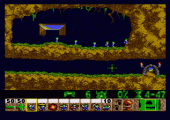
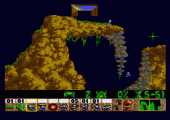
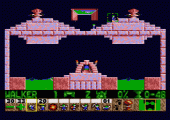
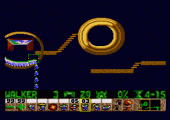
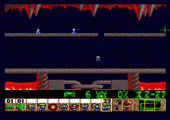
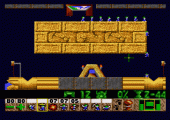
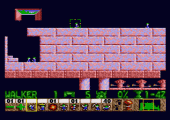
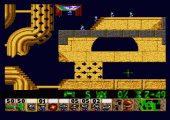
Recent Comments